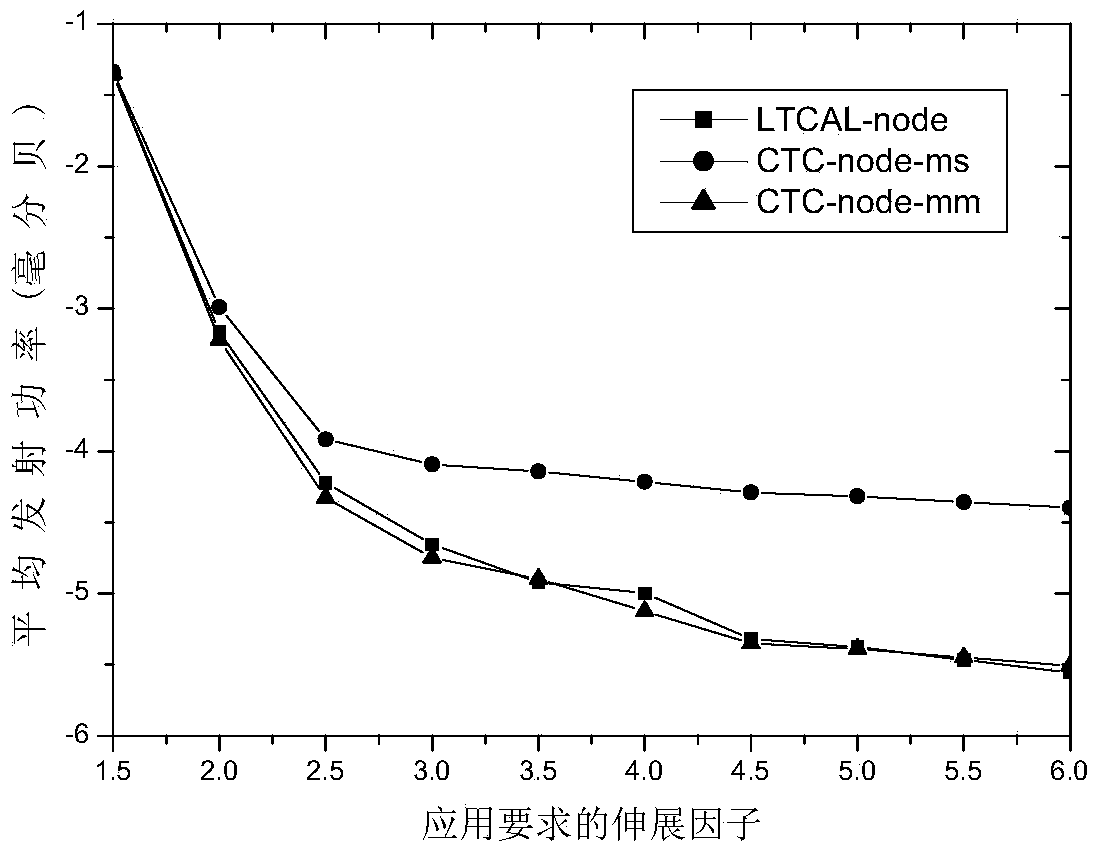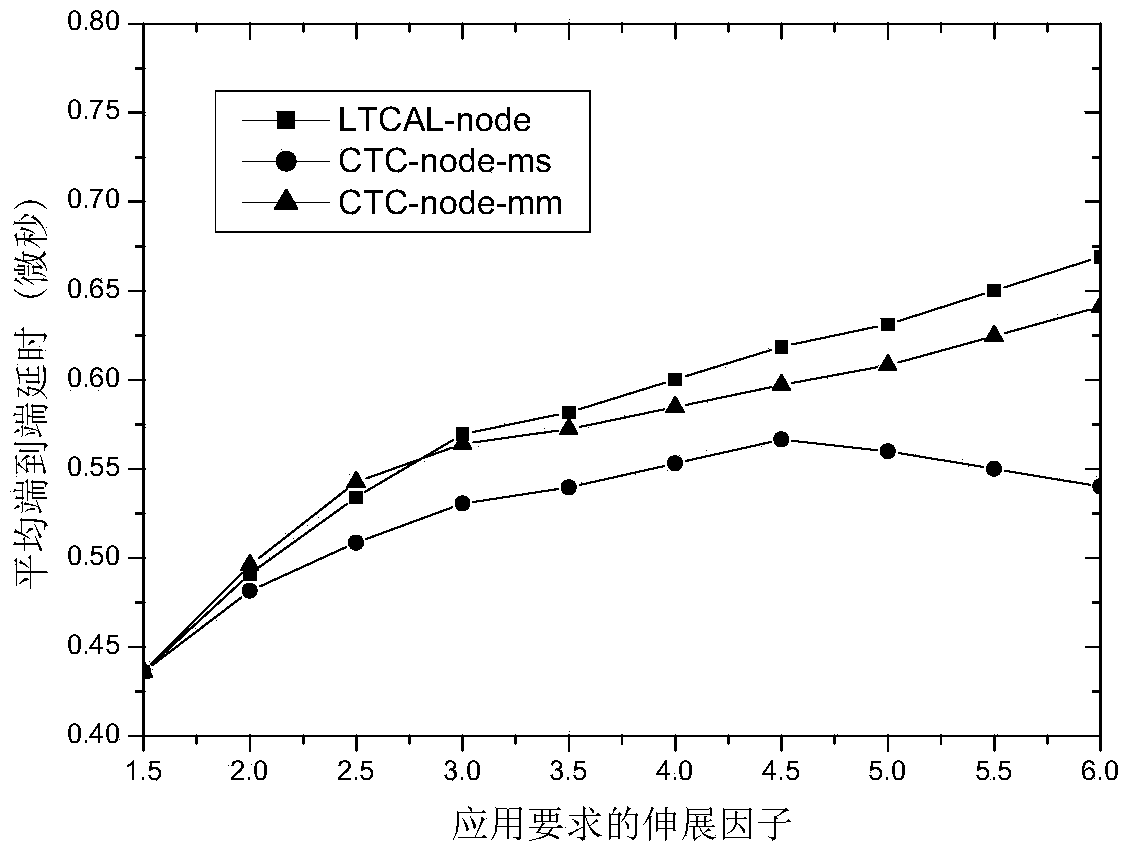Topology control method for effectively reducing construction expenditure based on wireless lossy network
A topology control and network technology, applied in wireless communication, network traffic/resource management, electrical components, etc., can solve the problems of high communication overhead, large search space, and long topology construction time, and achieve the effect of reducing construction overhead.
- Summary
- Abstract
- Description
- Claims
- Application Information
AI Technical Summary
Problems solved by technology
Method used
Image
Examples
Embodiment 1
[0145] 200 nodes are randomly distributed in a square area of 1000m×1000m, and a base station is located in the center of the area. We simulate the change of six topological performance indexes of the three methods with the increase of the stretch factor required by the application. The simulation results are shown in Figure 1 to Figure 6 .
[0146] figure 1 It is shown that with the increase of the stretch factor required by the application, the lower transmit power can also meet the constraint requirements, therefore, the three methods can achieve lower transmit power values. CTC-node-mm can take full advantage of the relaxation of stretch factor constraints and achieve lower transmit power values. In terms of performance, the method of the present invention is very close to CTC-node-mm, and obviously better than CTC-node-ms.
[0147] figure 2 It is shown that with the increase of the stretch factor required by the application, the three methods tend to adopt lower t...
Embodiment 2
[0154] In this embodiment, different numbers of network nodes are randomly distributed in a square area of 1000m×1000m, and a base station is located in the center of the area. Simulate the changes of the six topological performance indicators of the three methods as the node density increases. The simulation results are shown in Figure 7 to Figure 12 .
[0155] Figure 7 It is shown that with the increase of node density, the three methods can achieve lower transmit power values. Figure 8 and Figure 9 It is shown that the change of node density has little effect on the end-to-end delay and packet delivery rate, but when the node density is greater than 260 nodes / km2, the delay of our method starts to be better than CTC-node-mm. Figure 10 It is shown that the increase of node density is beneficial to reduce the total energy consumption of the network, because in the case of higher node density, it is easier to find the transmission path with smaller cumulative sum of ...
Embodiment 3
[0157] In this embodiment, 200 network nodes are randomly distributed in a square area of 1000m×1000m, and a base station is located in the center of the area. According to the present invention, the variation of the total energy consumption and the residual energy deviation of the three methods of simulation with the increase of the number of transmitting nodes, the simulation results are shown in Figure 13 to Figure 14 . Both the total energy consumption and the remaining energy deviation show an increasing trend as the number of transmitting nodes increases. Figure 13 and Figure 14 It is shown that more emission sources will generate more data, therefore, consume more energy and cause greater energy consumption disequilibrium.
[0158]In conclusion, when the required stretching factor DTC is small, the performance of our method is between the other two methods in terms of average end-to-end delay and average delivery success rate, but it is superior in the average re...
PUM
 Login to View More
Login to View More Abstract
Description
Claims
Application Information
 Login to View More
Login to View More - R&D
- Intellectual Property
- Life Sciences
- Materials
- Tech Scout
- Unparalleled Data Quality
- Higher Quality Content
- 60% Fewer Hallucinations
Browse by: Latest US Patents, China's latest patents, Technical Efficacy Thesaurus, Application Domain, Technology Topic, Popular Technical Reports.
© 2025 PatSnap. All rights reserved.Legal|Privacy policy|Modern Slavery Act Transparency Statement|Sitemap|About US| Contact US: help@patsnap.com



